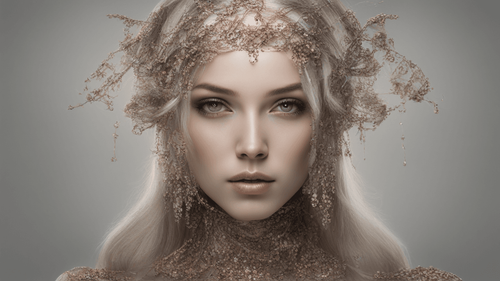
Introduction
In the rapidly evolving landscape of technology, artificial intelligence (AI) has emerged as a game-changer across various industries. One such impactful application is AI for images. As the world becomes increasingly visual, harnessing the power of AI to analyze, create, and optimize images is transforming the way we perceive and interact with visual content. From creative design to data-driven insights, AI for images is reshaping the possibilities. In this comprehensive guide, we'll delve into the intricacies of AI for images, exploring its significance, applications, benefits, and frequently asked questions.
AI for Images: A Closer Look
Understanding AI for Images
AI for images, often referred to as computer vision, involves the use of artificial intelligence algorithms to interpret, analyze, and generate visual content. This cutting-edge technology enables machines to replicate human visual perception and understand the elements within an image.
How Does AI Enhance Image Processing?
AI leverages advanced algorithms and deep learning techniques to extract meaningful insights from images. By recognizing patterns, objects, and contexts, AI algorithms enhance image processing capabilities, enabling tasks such as image recognition, object detection, image generation, and content optimization.
Applications of AI for Images
Image Recognition and Classification
AI-powered image recognition systems can identify objects, people, places, and even emotions depicted in images. This capability finds applications in diverse fields, including healthcare (diagnosing diseases from medical images), automotive (autonomous vehicles), and e-commerce (product recommendation).
Content Creation and Design
AI-driven design tools empower creators to generate captivating visual content effortlessly. These tools can generate logos, graphics, and illustrations based on user inputs, streamlining the creative process.
Visual Search and Recommendation
By understanding image content, AI enables visual search and recommendation systems. This technology enhances user experiences in e-commerce platforms, allowing users to find products using images instead of text-based searches.
Medical Imaging and Diagnosis
AI for medical imaging assists healthcare professionals in diagnosing and detecting medical conditions from X-rays, MRIs, and CT scans. This technology accelerates diagnosis, improves accuracy, and aids in early disease detection.
Art Restoration and Conservation
AI algorithms can restore and preserve artworks by analyzing damaged areas and generating accurate restorations. This application ensures the longevity of cultural heritage and artistic masterpieces.
Benefits of AI for Images
Enhanced Efficiency and Automation
AI-powered image analysis reduces the need for manual intervention, enabling rapid processing and analysis of large datasets. This automation enhances productivity and efficiency in various industries.
Precision and Accuracy
AI algorithms offer exceptional precision in image recognition and analysis. This level of accuracy is particularly valuable in critical applications such as medical diagnosis and quality control.
Innovative Creativity
AI-generated images inspire innovative design possibilities. Creators can collaborate with AI to explore new visual aesthetics, leading to fresh and captivating content.
Real-Time Insights
AI-powered image analysis provides real-time insights, enabling businesses to make informed decisions promptly. For instance, retailers can analyze customer reactions to in-store displays instantly.
Risk Mitigation and Safety
In industries like manufacturing and construction, AI-powered image analysis helps identify potential hazards and safety risks, contributing to safer work environments.
AI for Images: Addressing FAQs
How Does AI for Images Work?
AI for images employs neural networks to process and analyze visual data. These networks simulate human neural connections, enabling the system to learn from large datasets and improve its accuracy over time.
Is AI for Images Only Beneficial for Businesses?
No, the benefits of AI for images extend beyond businesses. Individuals, researchers, artists, and healthcare professionals can leverage AI-powered image analysis for various purposes, from personal creative projects to medical diagnoses.
Can AI Replace Human Creativity in Visual Content?
AI enhances human creativity rather than replacing it. AI-powered tools assist creators by generating ideas, designs, and visual elements, allowing humans to focus on higher-level creative tasks.
Are There Ethical Concerns in AI Image Analysis?
Yes, ethical considerations arise in AI image analysis, particularly in areas such as privacy, bias, and data security. Striking a balance between technological advancement and ethical responsibility is crucial.
How Accessible is AI for Images to the General Public?
AI for images is becoming increasingly accessible through user-friendly software and platforms. Many AI-powered design tools and image analysis applications are designed for users with varying levels of technical expertise.
What Does the Future Hold for AI in the Image Industry?
The future of AI for images is promising. As AI algorithms continue to evolve, we can expect more accurate image recognition, creative collaboration between humans and AI, and expanded applications across diverse sectors.
Conclusion
In the realm of visual content, AI for images stands as a testament to the boundless possibilities that artificial intelligence offers. From revolutionizing creative design to providing invaluable insights, AI for images is reshaping industries and transforming the way we interact with the visual world. As technology advances and AI algorithms continue to mature, we're on the brink of witnessing even more remarkable innovations in the realm of visual intelligence. Embracing AI for images is not just a leap into the future; it's an exploration of the untapped potential that lies within the convergence of AI and visual content.